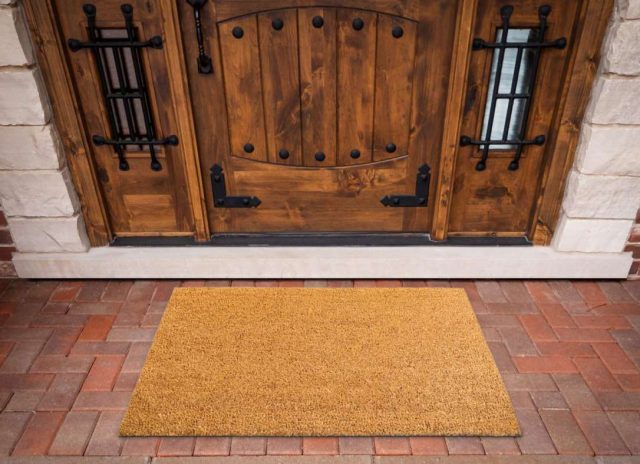Doormats used in communal hallways are sometimes considered a fire hazard. Some building supervisors have stopped installing such doormats entirely and begun using flame-retardant ones instead in order to minimize such hazards.
There are strict standards set by the European Union (EU) that apply to products used in engineering works or building in the UK. One such standard applying to fire testing can be found in the floor coverings sector and is known as EN 13501-1.
The four European ‘reaction to fire’ test methods included in this standard are applicable to floor coverings, whereas EN ISO 9239-1 and EN ISO 11925-2 are the most significant test methods that apply to resilient, laminate, and textile floors. So, if you’re looking to buy flame-retardant doormats, ensure that you get ones that reach the standards your business requires.
The tests
The tests indicate how easily a test product that is vertically positioned will catch fire by employing a small burner method. In a combustion chamber, the edges and/or surface of the test product are subjected to a flame during a 15-second period.
If the flame doesn’t rise to 150mm above the flame’s point of impingement before 20 seconds are up, this means the specifications of classes D fl and E fl are met, and the test product is classified as normally flammable. On the other hand, if the flame reaches that point, the test is considered failed, and the product is classified as easily flammable or F fl class.
Classes B fl and C fl, which are achieved by flame-retardant construction products, are obtained if the test product passes a radiant panel test. These classes evaluate the burning behavior of a test product that is first positioned horizontally and then exposed to a radiant heat source and lighted using a pilot flame.
If these tests’ criteria are met, this means the floor coverings follow the EN 13501-1 standard.
Classes
In what follows, we’ve provided the different flammability classes, including the criteria that are used to assess floor coverings. The abbreviation fl represents flooring in the table.
- A1 fl – Only obtained by non-flammable floor coverings that do not pose any risk of smoke formation.
- A2 fl – Only obtained by non-flammable floor coverings that have low levels of organic binding agents.
- B fl – Radiation intensity of 8 kW/m2 = flame-retardant construction products.
- C fl – Comparable with German B1 classification. Radiation intensity of 4.5 kW/m2 = flame-retardant construction products.
- D fl – Radiation intensity here of only 3 kW/m2 = normally flammable construction products.
- E fl – Small burner test = normally flammable construction products.
- F fl – No requirements made, no test = easily flammable construction products.
The lower the class is, the more combustible the material is. Also, it’s less suitable for use in environments where ensuring fire safety is crucial.
It’s impossible for the majority of doormat materials to meet the criteria of classes A1 fl and B1 fl. Also, any material that’s classified as D fl and F fl is perceived as a fire hazard in most places. Accordingly, classes B fl s1 and C fl s1 are considered the most appropriate for commercial uses.
In addition to tests related to flammability, other tests exist whose purpose is to assess how much smoke is released by the product. If the product produces a larger amount of smoke, it’s considered a threat to our health, and it may incur a risk of fire in a fire emergency. This is the reason why it’s of utmost importance to analyze the results of smoke and product flammability tests when choosing doormats for your premises.(2)

Speaks from heart, always too passionate and driven by emotions. Spins the words with kindness & sharpness, intriguing your ever-inscrutable minds.


